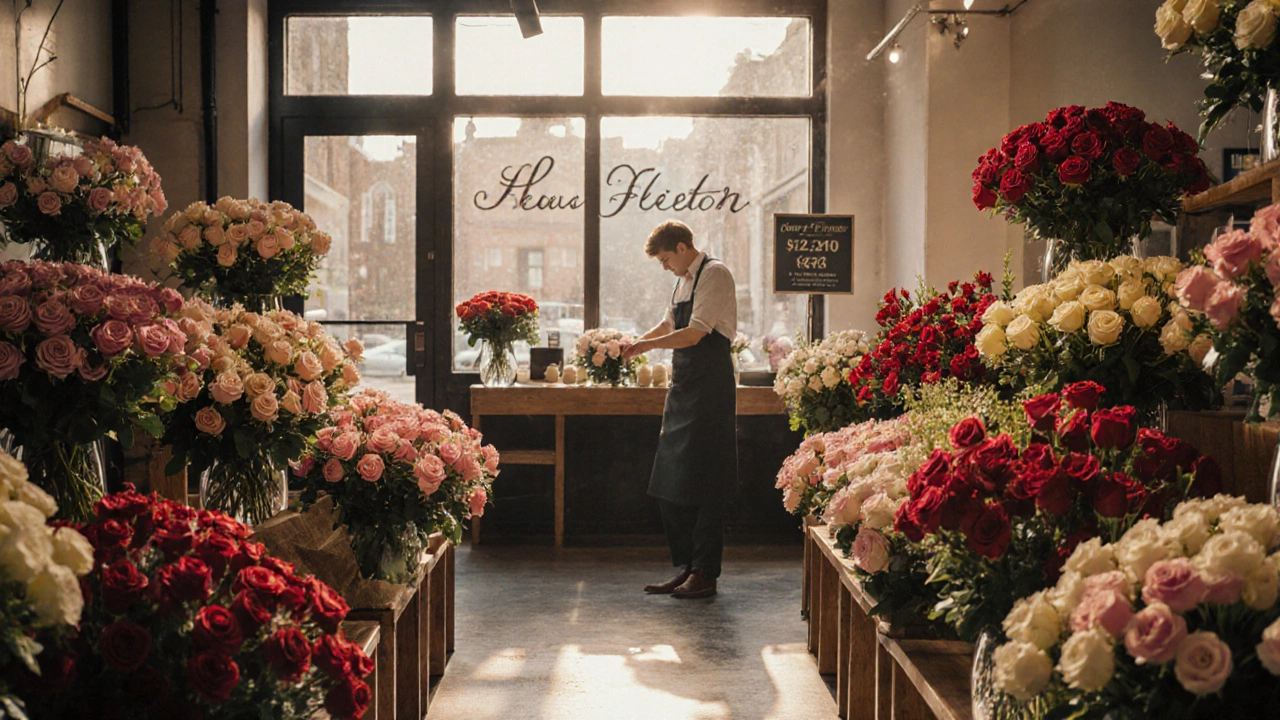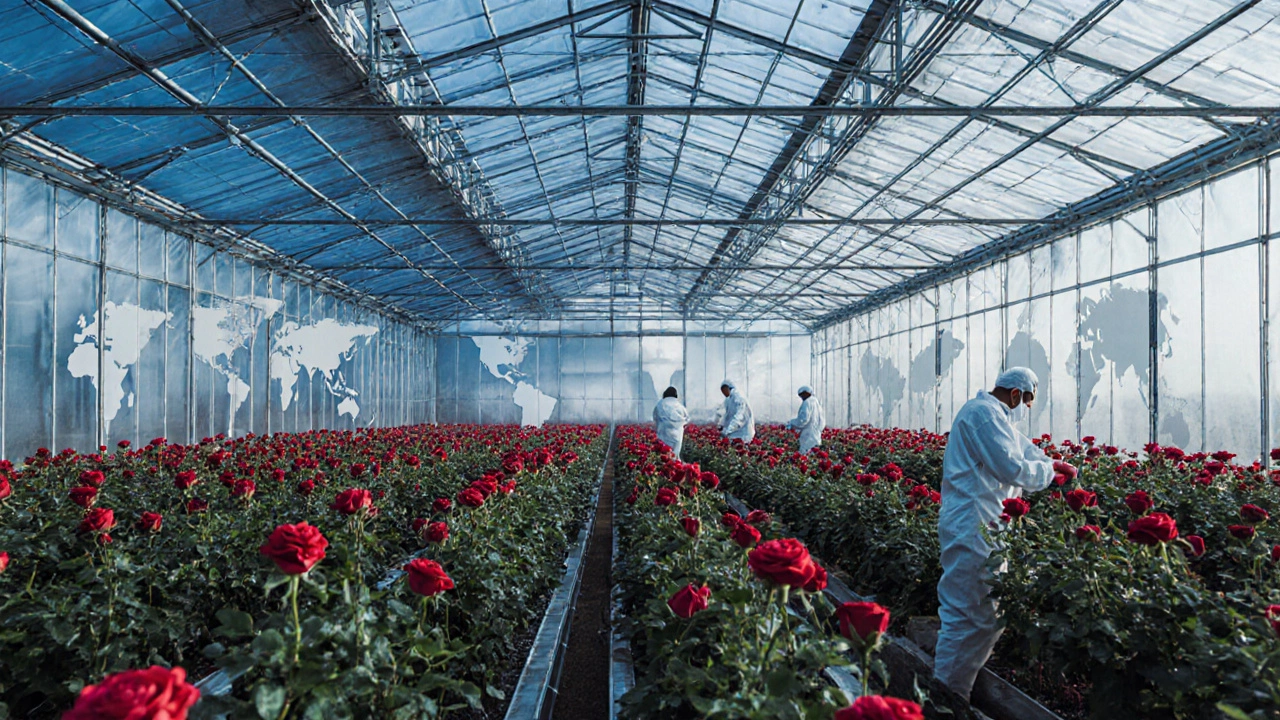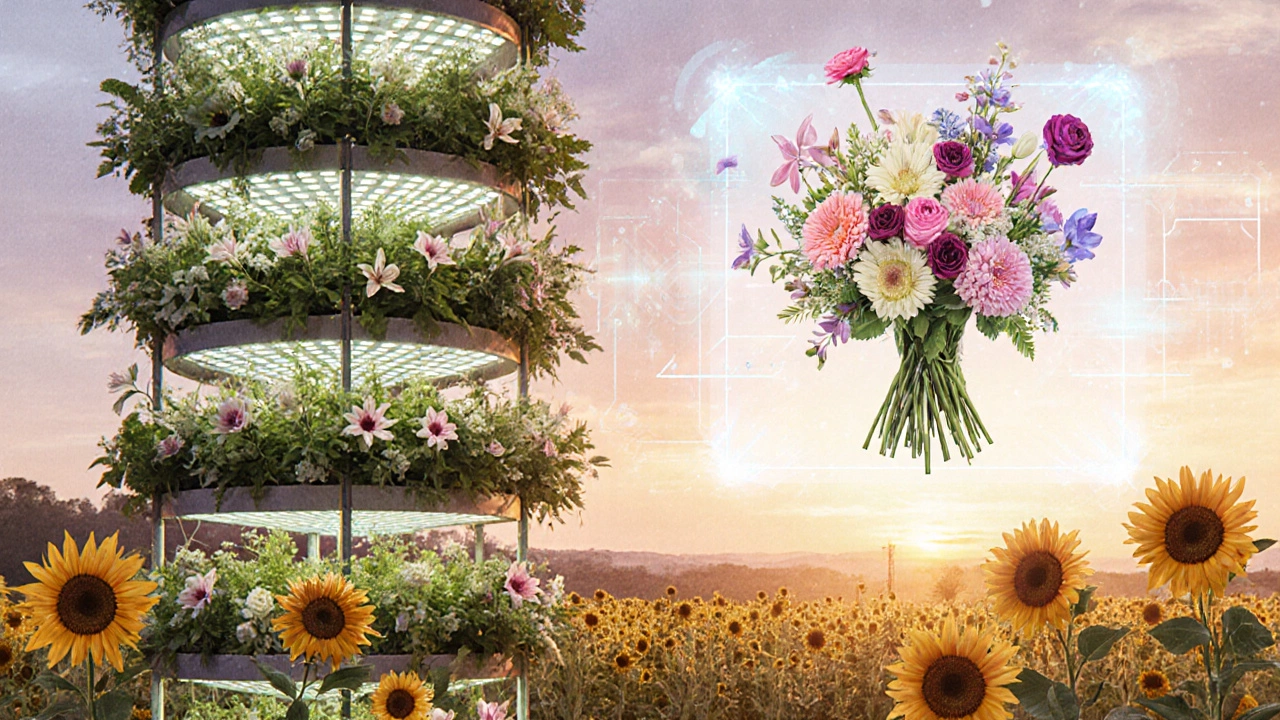What Is the #1 Most Sold Cut Flower? - Answer Revealed
 Oct, 12 2025
Oct, 12 2025
When you walk into any floral shop, one name instantly pops up on every sign and price tag: the Rose. In 2024 alone, global growers shipped roughly 13million rose stems each day, translating to over €8billion in sales. That sheer volume makes the rose the clear most sold cut flower on the planet.
Answer: The Rose Reigns Supreme
The rose has held the top spot for decades, but recent data from the International Cut‑Flower Association (ICFA) confirms it still leads. In the latest market report, roses accounted for about 38% of total cut‑flower volume, outpacing the next best seller by a margin of more than 15 percentage points.
Why Roses Dominate the Market
Several factors keep roses at the pinnacle:
- Universal appeal: Roses convey love, respect, celebration, and sympathy across cultures, making them a go‑to choice for weddings, birthdays, and funerals.
- Year‑round production: Modern greenhouse technology allows growers to produce roses in any climate, smoothing out seasonal gaps that affect other flowers.
- Supply chain efficiency: A dense network of farms in Kenya, Ecuador, the Netherlands, and the United States ensures a steady flow of fresh stems to retailers worldwide.
Top 5 Best‑Selling Cut Flowers (2024‑2025 data)
| Flower | Approx. Annual Sales (stems) | Key Markets | Typical Uses |
|---|---|---|---|
| Rose | 4.8billion | North America, Europe, Asia | Weddings, Valentine’s Day, bouquets |
| Tulip | 2.1billion | Europe, Middle East | Spring décor, gifting |
| Carnation | 1.9billion | Asia, North America | Funerals, Mother’s Day |
| Lily | 1.5billion | Europe, Australia | Formal events, religious ceremonies |
| Chrysanthemum | 1.2billion | Asia, Europe | Seasonal arrangements, festivals |

Choosing the Right Cut Flower for Your Event
If you’re planning a wedding, a birthday, or even a corporate function, the best flower isn’t always the bestseller. Here’s a quick decision guide:
- Identify the vibe - romantic, modern, rustic.
- Consider seasonality - fresh local options can lower cost and increase longevity.
- Match the color palette - roses offer a spectrum from classic red to pastel pink, while gerberas (another popular cut) bring bold, saturated tones.
- Account for pollen - for allergy‑prone guests, choose low‑pollen varieties like orchids (Orchid) or ranunculus.
Tips for Buying Fresh Cut Flowers
Even the most celebrated bloom can wilt quickly if mishandled. Follow these pro tricks:
- Inspect stems for firm, green foliage; browning tips signal age.
- Ask the vendor the “harvest date” - fresher stems last longer.
- Prefer flowers shipped in water‑filled sleeves; they arrive hydrated.
- Re‑cut stems at a 45‑degree angle and place them in a clean vase with lukewarm water and a dash of floral preservative.

Future Trends in the Cut‑Flower Industry
Looking ahead, several movements could shift the sales hierarchy:
- Sustainability: Consumers are gravitating toward locally grown, pesticide‑free varieties. This could boost regional flowers like Sunflower in the US Midwest.
- Tech‑enabled farming - LED‑lit vertical farms are already producing high‑quality lilies and gerberas with reduced water usage.
- Customization - AI‑driven design tools let shoppers create bespoke bouquets, blending traditional favorites with exotic species such as Gerbera.
Frequently Asked Questions
Why are roses more expensive than other cut flowers?
Roses require more intensive greenhouse management, selective pruning, and longer shipping distances. Their high demand also means growers can command premium prices, especially for specialty colors or long‑stem varieties.
Are there any low‑allergy cut flowers?
Yes. Flowers with minimal pollen, such as orchids, hydrangeas, and certain lilies, are safer choices for guests with sensitivities.
How long do fresh cut roses typically last?
In ideal conditions - cool room, fresh water, and a preservative - roses can stay vibrant for 7‑10 days.
What’s the best time of year to buy roses at a lower cost?
Late summer and early autumn often see price dips because growers have built up inventory after the peak Valentine and spring wedding seasons.
Can I order cut flowers directly from farms?
Many large‑scale farms now offer online wholesale portals. Buying straight from the source can reduce markup and guarantee fresher stems, especially for bulk events.